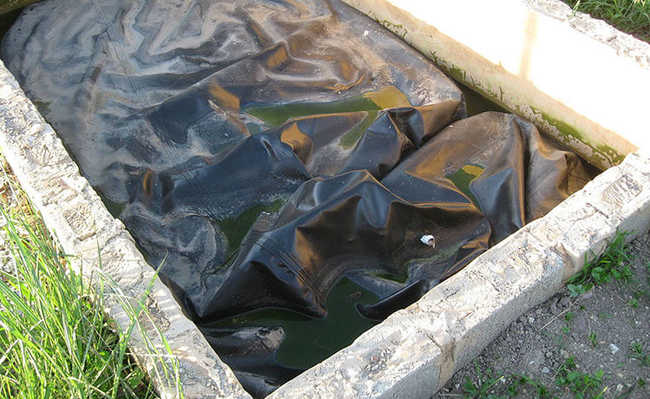Understand what obsolescence is
Learn about the three different forms of obsolescence currently in practice and the risks they pose

Michael Gaida image by Pixabay
We live in a time of rapid and frequent changes - cultural, economic and social. We human beings are also subject to these transformations and it is through them that we change our behavior. Obsolescence is a striking feature of this contemporary scenario and manifests itself in three forms: programmed, perceptive and function.
Technological advances are important in this context and stimulated this new organization of society, which turned to the emergence of new desires and needs. Thus, production and consumption came to be governed by the law of obsolescence, seduction and diversification, dictating that the new will always be superior to the old, accelerating the disuse and premature disposal of consumed products. Shopping has become an act of creation, identity, identification, expression and communication.
In addition to this new organization and the new ways of producing and consuming that have emerged, there is also the fact that we are experiencing a period of intense population growth. According to the United Nations Population Fund (UNFPA), the planet currently has more than seven billion people and the forecast is that the world population will surpass nine billion inhabitants in the middle of the 21st century. Thus, the accelerated demand for products and services to serve us is a problem to be faced.
The government's strong incentive for companies to increase production and competitiveness promotes an ever-increasing stimulus to consumption, revealing the psychology of waste that still dominates contemporary industrial direction. As a result, we have an imbalance caused by the accelerated extraction of raw materials, increasing the use of water and electricity, in addition to pollution rates and greenhouse gas emissions.
This imbalance is correlated with the great demand generated by population growth and urbanization on the planet, and with the capitalist logic that seeks to achieve profits by increasing the pace of production. In these circumstances, the concept of obsolescence of products stands out.
The term obsolescence means becoming obsolete. It is the process or state of what is in the process of becoming outdated or that has lost its usefulness and which, consequently, has fallen into disuse. From a commercial point of view, obsolescence is defined through the application of techniques used to artificially limit the durability of products and services with the sole objective of stimulating repetitive consumption.
This concept emerged between 1929 and 1930, against the backdrop of the Great Depression, and aimed to encourage a market model based on serial production and consumption, in order to recover the economies of countries in that period. In a short time, obsolescence revealed one of the most serious environmental impacts to be faced: the management of waste resulting from the process of unrestrained consumption.
Main obsolescence strategies
There are currently three main strategies used as engines of the economy and consumerism, which end up making products obsolete. They are: planned or quality obsolescence, perceptual or desirability obsolescence, and technological or function obsolescence.
Scheduled obsolescence

Sascha Pohflepp, Sea of phones, CC BY 2.0
Also known as planned or quality obsolescence, it refers to the interruption or scheduling of a product's useful life intentionally made by the manufacturer. In other words, it consists of producing items already establishing the end of their useful life.
It is, therefore, about shortening the useful life of a product, so that consumers are forced to buy, in a short period of time, new products for the same purpose, increasing the profitability of companies. Thus, products with a shorter shelf life are purposely sold with the intention of accelerating consumption.
Planned obsolescence is the strategy pointed out by some economists as one of the biggest and main solutions used during the 1929 crisis in the United States to reduce the unemployment rate and heat up the American economy. Soon after, this strategy was used worldwide. Read more in the article: "What is planned obsolescence?".
A pioneering and emblematic case of this practice occurred with the Phoebus cartel, headquartered in Geneva, which had the entire lamp industry organized under it, with the participation of the main lamp manufacturers in Europe and the United States. A reduction in the costs and life expectancy of the lamps from 2,500 hours of duration to just 1,000 hours was defined. Thus, companies would be able to control demand and production. And this type of practice, which began in the 1930s, continues to this day.
There are also some examples in the textile industry. In 1940, Dupont, a chemical company, created nylon, an extremely strong and revolutionary new synthetic fiber. But there was a problem with this invention: women would stop buying new pantyhose because of the efficiency of the nylon created. So Dupont engineers had to design a weaker fiber.
Another example occurred during the first generation of the iPod, the music player from apple, which was intentionally designed to have a short service life. Casey Neistat, an artist from New York, USA, had paid $500 for an iPod whose battery stopped working 18 months later. He complained, but Apple's response was, "It's better to buy a new iPod." After losing the lawsuit and all the negative repercussions, Apple struck a deal with consumers, putting together a battery replacement program and extending the iPod warranty.
Another case of this practice can be observed in the field of inkjet printers. They would have a specially developed system to lock the equipment after a certain number of printed pages, without the possibility of repair. For the consumer, the message is that the printer is broken and there is no repair. But, in reality, the existence of a chip, called eeprom, which indicates how long the product will last. When a certain number of printed pages is reached, the printer simply stops working.
perceptual obsolescence
Perceptual obsolescence is also known as psychological obsolescence or desirability. It occurs when a product, which works perfectly, is considered obsolete due to the appearance of another one, with a different style or with some alteration in its assembly line. This strategy is referred to as the premature devaluation of a product or service from an emotional point of view and is widely used by companies with the main objective of increasing sales.
The psychological devaluation of products results, for users, in the feeling that their good has become outdated, making the object less desirable, although it still works - and often in perfect condition. Thus, this strategy can also be called psychological obsolescence, since it is totally related to the wishes and desires of the consumer.
In other words, mechanisms to change the style of products are adopted as a way to induce consumers to go shopping repeatedly. It's about spending the product on people's minds. In this way, consumers are led to associate the new with the best and the old with the worst. The style and appearance of the goods become all-important elements and it is the design that brings the illusion of change through creating a style. Thus, perceived obsolescence, in many cases, makes consumers feel uncomfortable when using a product that they believe has become outdated.
It is design, together with advertising, that over the years has been able to awaken people's unbridled desire for consumption based on a business strategy. This practice results in conditioning a large portion of the population to believe that the possession of material goods gives access to happiness. Advertising and the media act as trendsetters, boosting design projects by enabling a significant exposure and presence in the imagination of consumers.
The perceptual obsolescence strategy can be considered a subdivision of programmed obsolescence (read more in "Perceptual Obsolescence: stimulating the desire for the new"). The big difference between the two strategies is that planned obsolescence makes a product obsolete by shortening its useful life, causing it to lose its functionality, and perceptual obsolescence makes the product obsolete in the eyes of the consumer, no longer being noticed as a style trend, even though it's still perfectly functional.
Technological obsolescence

Rudy and Peter Skitterians image by Pixabay
This strategy is different from those presented above. Technological obsolescence, or function obsolescence, as it is also known, occurs when a product, even working and fulfilling the function for which it was designed, is replaced by a new one, with more advanced technology, which ends up performing the needs more efficiently. of the consumer. This is the kind of obsolescence that happens when a genuinely improved product is introduced to the market.
This form of obsolescence is considered by some specialists as the oldest and most permanent form of obsolescence since the Industrial Revolution, and can be analyzed through technological innovations. Thus, function obsolescence is associated with the conception of progress perceived with technological advances that have taken place in society over the years.
Technological obsolescence is part of the nature of development. This strategy refers to what happens when there is actually an improvement and therefore it is not a bad thing, it is important that it happens.
Looking at our recent past, we can explicitly see the use of the function obsolescence strategy in different types of products: in the cell phone sector - which in less than two decades of commercialization already surpassed the innovations of several electronics existing before its appearance in the market; in the field of photographic cameras - which became digital and were added with new features, expanding its area of operation; and in the field of products related to the information technology area, which at an accelerated pace are constantly adding new functions.
Despite some negative aspects, function obsolescence is seen as the least perverse and the closest to the principles of sustainability. It is a view that an existing product only becomes outdated when (and if) a new one is introduced that performs its function better. The product is not manufactured with congenital defects, as in the case of programmed obsolescence, which in part prevents premature disposal. Read more in "Function Obsolescence: Technological Advances That Stimulate Consumption".
Alternatives
The accelerated demand for new products, accompanied by the premature disposal of products that are still in operation, leads to an exacerbated generation of waste, centered on waste. The practice of obsolescence has intensified one of the most serious environmental impacts to be faced today: the management of waste resulting from the process of unrestrained consumption.
Through this, the search for viable alternatives for the disposal of waste resulting from the consumer society arises. It is vital to rethink the current systems and strategies used. In this context, the concept of circular economy emerges as a promise (Read more in "What is Circular Economy"). It can be considered a combination of several concepts created in the last century, such as: regenerative design, performance economy, cradle to cradle – from cradle to cradle, industrial ecology, biomimetics, blue economy and synthetic biology. Everyone's focus is to develop a structural model for the regeneration of society.
The circular economy is a concept based on the intelligence of nature, being opposed to the current linear productive process by proposing a circular process, where waste is an input for the production of new products. The production chain would be rethought so that used appliance parts, for example, could be reprocessed and reintegrated into the production chain as components or materials from others. Thus, the circular economy starts from the proposal to deconstruct the concept of waste with the evolution of projects and systems that privilege natural materials that can be fully recovered.
In addition, some movements and actions against the practice of obsolescence are already beginning to emerge. One is the fixer movement, which can be considered an expression of the developing counterculture, and is recognized by its most enthusiastic participants as a form of activism. It started in the Netherlands and was created by journalist Martine Postma through the creation of the ‘Repair Café Foundation’.
Created with the intention of promoting the action, the journalist decided to help people repair their own objects, in a practical way, avoiding unnecessary expenses during the repair. This action promotes the extension of the useful life of the products and teaches participants to repair them in case of a new need.
Through this movement of repairmen (fixers), people discover that they can give new life to products that were previously kept in storage or were discarded. And, according to the most enthusiastic participants in this movement, “the best thing for the planet is not to recycle garbage, but not to produce it”.
At the center of this movement is the discussion about obsolescence and the realization that many problems caused by the rampant consumption and the rapid obsolescence of products would be avoided if the design and consumption culture of companies did not encourage the rapid disposal of products. We know that nature is finite, that is indisputable. Therefore, the purpose of economic activities cannot be just profit and the consequent production of waste. New strategies and forms of organization are needed.
Sources: Advertising Persuasion and Obsolescence, Fixers: Rise Counterculture, United Nations Population Fund - UNFPA and Obsolescence and Merchandise Aesthetics










